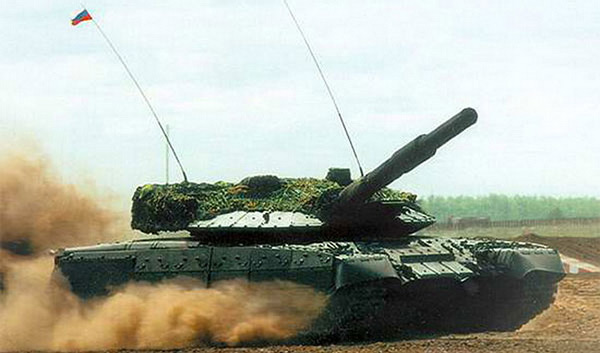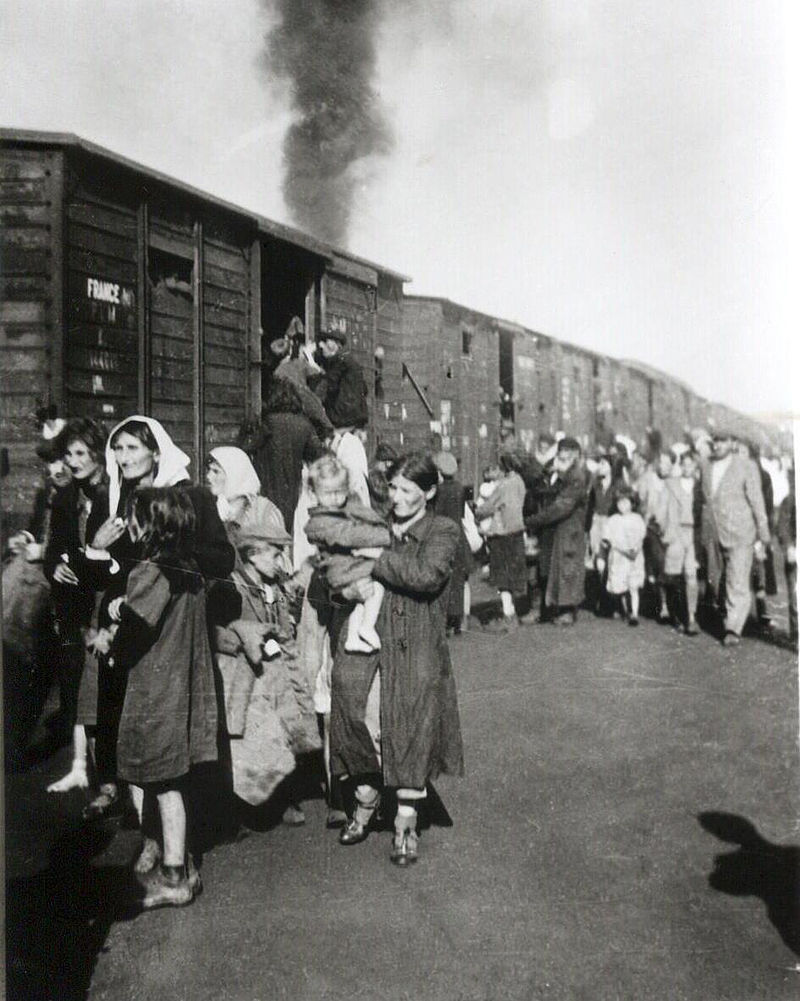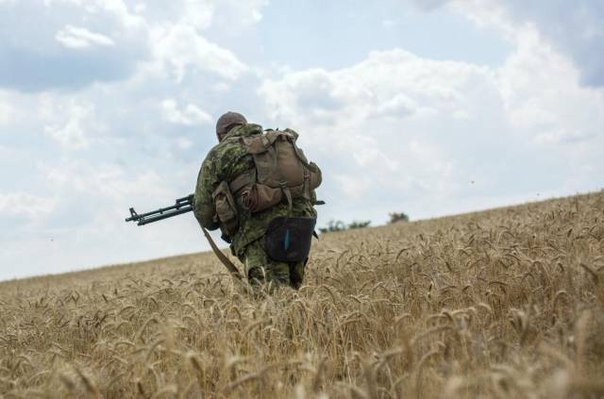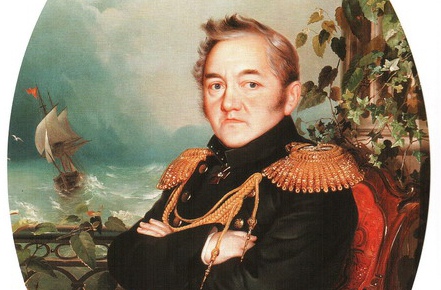
Admiral Mikhail Lazarev
Emperor Alexander I implemented a number of reforms in the public administration system, instead of creating the boards of the Ministry. "Following the great spirit of the Russian converter - Peter the Great, has left us traces of his wise intentions, of whom we tried to march worthy of his successors, We will like to share public affairs at different parts, according to their natural communication between a, and prosper in the flow charge shared in the same jurisdiction of elected ministers us, putting them basic rules, with which they have to be guided in the performance of all, which will require them to post and what we expect from their loyalty, activity and zeal for the common good ". The Ministry of the Navy was established in 1802 year. College of the Admiralty remained in its present form, but subordinated to the Minister have. Regular Navy at the beginning of the XIX century continued its development. As the number of warships, he firmly took the third place after Great Britain and France. Warships and their weapons, generally, It meets the requirements of military affairs. In the first half of the XIX century as a result of technical and economic backwardness of the country to Russia beginning of the Crimean War had very little steam ships. But on the organization and combat training activities thanks to the Black Sea Fleet Admirals M. P. Lazarev and P. FROM. Nakhimov, AT. A. Kornilov and B. AND. Istomin was superior to the English and French fleets. steam ships, openly with wheels arranged wheels and screw, had propeller, cited in the power movement of the steam engine to 800 – 1000 HP. Screw ship in calm went by steam, with the wind - sail or by means of steam and sails. In contrast to the paddle steamer screw could have a more powerful artillery. All ships were made of wood, and only their underwater part is sheathed with copper sheets. Before the Crimean War in the Baltic and Black Sea fleets and in Arkhangelsk, Caspian Sea and Kamchatka flotillas were more than 90 thousand. human. Baltic Fleet had 26 battleships, 9 frigates, 8 corvettes and brigs, 9 steamer-fregatov, 10 transports, 143 small ship, and the Black Sea Fleet - 14 battleships, 6 frigates, 16 corvettes and brigs, 6 steamer-fregatov, 32 transport and 82 small ship. On the eve of the Crimean War, Russia has not had a single screw ship, although 1851 – 1852 years of the construction of two frigates and screw screw alteration in three sailing ships. Adopted ships began to arrive paixhans gun, fired by an explosive spherical bombs. The range of their flight reached 2 km.
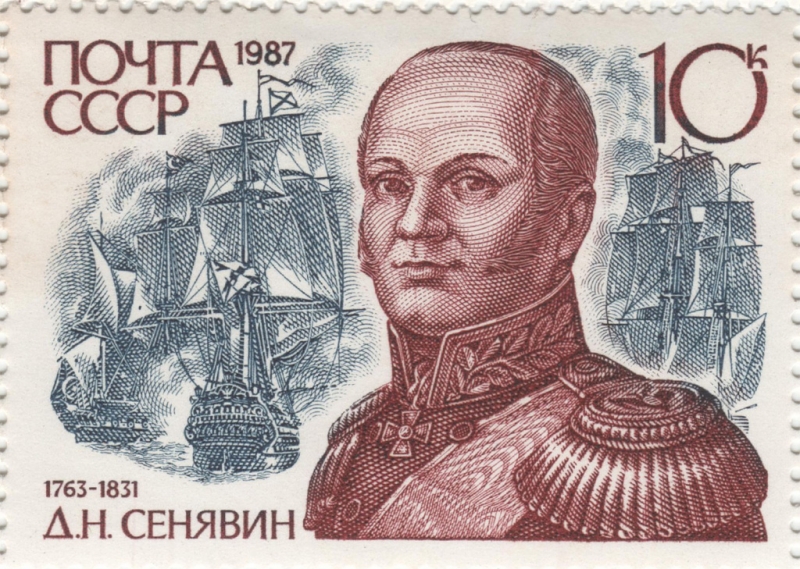
Admiral Dmitry Senyavin. Postage stamp USSR
The level of combat training of the Black Sea Fleet was higher, than in the Baltic. The Baltic Fleet the entire focus of the training was on the outer side, preparing the annual Fleet king's looks. The Black Sea Fleet, which command possessed thanks to the distance from Petersburg greater autonomy, sailors were taught the art of war; in combat training chernomortsy held Suvorov- Ushakovskaya principles.
For the tactics of the sailing fleet was maneuvering characteristic for the purpose of employment naivygodneyschego windward position relative to the enemy. The ships were built for combat in two wake column. The distance between the build opponents determined artillery efficiency, which was the major factor tactics. Steam ships were set to fight on the flanks between the columns, assigned to them and towing vehicles out of service.
Great contribution to the construction of the Russian sailing fleet, the development of innovative marine training methods made after Spiridova and Russian admiral Ushakov Senyavin, Lazarev, Kornilov and Nakhimov.
Admiral Dmitry Senyavin in the activity sought to multiply the honor and glory of the Russian fleet. He highly appreciated the quality of Russian sailors, and all their efforts were directed at military training and education of staff. New tactics, developed Senyavin, was squadron separation into two columns and five tactical groups. one column, designed to act on the main line, It consisted of three groups of two ships in each, another column, consisting of two groups, also two ships in each, It intended to act depending on the situation. Senyavin regarded it as a reserve. According to the instructions, these ships have been increasing attacks and attack enemy ships there, where more than evident in the need. With limited forces carried Senyavin, in this way, the idea of creating a tactical reserve, and has developed the most appropriate method of its use in battle. Characteristic for flotovodcheskogo art Senyavina was applying the concentrated blow, convergence on a short distance with the enemy and his persecution.
Advanced methods and forms of waging war at sea, training and education of personnel have been developed after Senyavina Lazarev. The name of Mikhail Petrovich Lazarev associated creation of a strong Black Sea Fleet. When it was re-created by the ship's structure - 16 battleships and more 150 various courts. He insisted on the construction of steam ships, but his effort was opposed by the Russian Empire otstatalost, do not allow to make the transition from sailing ships to steam ships.
Admiral Lazarev went on to develop advanced military tradition of Peter I, Senyavina. Under Lazarite school understood advanced system of education and training, offensive combat tactics sea. This school have been many Russian sailors. Educated and trained Lazarev, Black Sea sailors Crimean War demonstrated heroic, dedication and the high art of warfare.
Gabriel Tsobehiya







